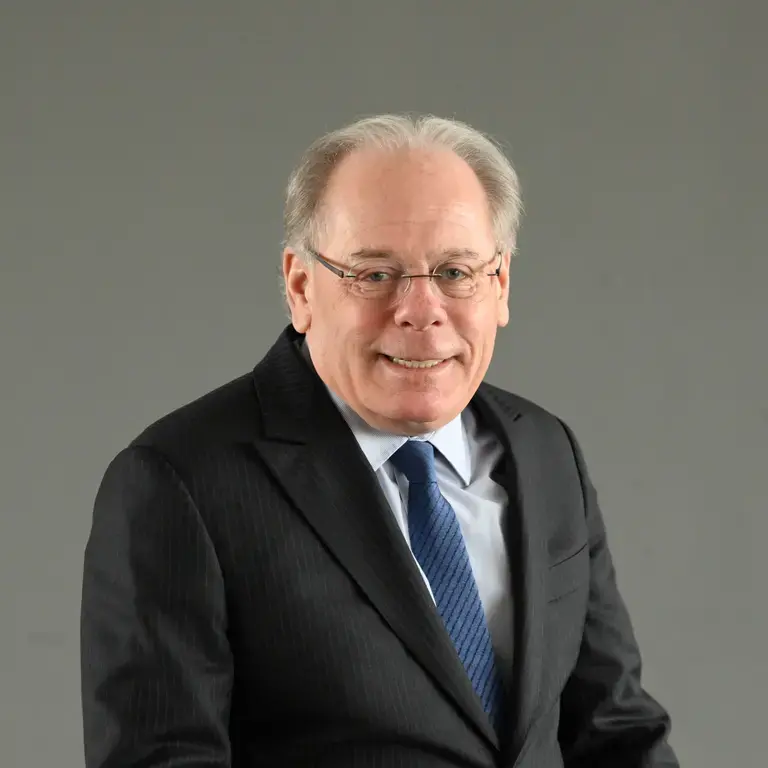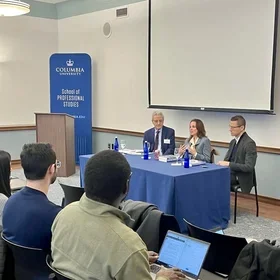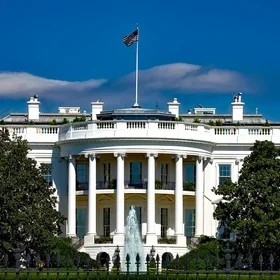By Steven Cohen, Ph.D., Director of the M.S. in Sustainability Management program, School of Professional Studies
New York City’s population density and wealth would not be possible without its mass transit system, and most of New York’s travel takes place on its mass transit system. Despite that fact, even New York City has more motor vehicles than it can handle. Congestion pricing, bike lanes, and improved mass transit will help reduce traffic, but particularly outside Manhattan, automobiles will remain a necessity for daily life. Electric vehicles will help reduce air pollution, but congestion will remain as people and vehicles compete for the same scarce space on the street. Our goal in the United States should be to reduce but not eliminate motor vehicles in urban places.
Many European cities are working to reduce their auto traffic, and one of the more visible signs of progress can be seen in Paris. Writing in the Washington Post, Naema Ahmed and Chico Harlan recently reported on dramatic reductions in air pollution and observed that:
“The change shows how ambitious policymaking can directly improve health in large cities. Air pollution is often described by health experts as a silent killer. Both PM 2.5 and nitrogen dioxide have been linked to major health problems, including heart attacks, lung cancer, bronchitis and asthma. Paris has been led since 2014 by Mayor Anne Hidalgo, a Socialist who has pushed for many of the green policies and has described her wish for a “Paris that breathes, a Paris that is more agreeable to live in.” Her proposals have faced pushback — from right-leaning politicians, a car owners’ association and suburban commuters, who say that targeting cars makes their lives more difficult. But last month, Parisians voted in a referendum to turn an additional 500 streets over to pedestrians. A year earlier, Paris had moved to sharply increase parking fees for SUVs, forcing drivers to pay three times more than they would for smaller cars. The city has also turned a bank of the Seine from a busy artery into a pedestrian zone and banned most car traffic from the shopping boulevard of Rue de Rivol.”
In many cities around the world, congestion pricing and other policies that reduce auto traffic have initially been opposed but then typically embraced as we humans see the advantage of reductions in auto traffic. Mobility is one of the reasons we move to cities. We want to move quickly from place to place to experience the diversity of urban experiences. We often don’t want to live and work in the same neighborhood, and cities enable us to maintain a wide network of friends and family that we can engage with conveniently. Mobility is sometimes facilitated by personal transportation, but due to congestion the automobile can also impede mobility. In some cities, like Los Angeles, driving to another neighborhood at the wrong time of day can be like crossing the ocean. We are beginning to see efforts to create alternatives to the auto. As the Washington Post’s Chico Harlan reported last month:
“In Norway, Oslo promotes “car-free livability.” Paris Mayor Anne Hidalgo touts the “end of car dependence.” And while those ideas might sound radical to car-loving Americans, they are fast becoming the norm across the Atlantic, where 340 European cities and towns — home to more than 150 million people — have implemented some kind of restrictions on personal car usage…In the popular imagination of tourists, European cities — with their postcard piazzas and narrow footpaths that predate the automotive age — might seem like a seamless fit for such moves. But until several decades ago, European cities were in fact being colonized by vehicles, with engineers devising massive highways and tunnels aimed at easing car access to urban cores. The new policies, then, point to the increasingly assertive way this continent is rethinking the design of cities — and the priorities of health and climate.”
This will be much more difficult to accomplish in the United States. With few exceptions, our development patterns are suburban and built around the auto. However, we are starting to see some movement in the other direction. Much of the new construction in suburban Orange County, California, is in low rise (5 stories or so) multi-family dwellings. Those folks still rely on autos, but greater density may eventually attract commerce that reduces auto dependence. Remarkably, a car free neighborhood called Culdesac Tempe, has been built in Tempe, Arizona. According to Joe Orovic on the Islands website:
“The "first car-free neighborhood" in America is technically a mixed residential and retail development nestled inside Tempe, Arizona. It fosters pedestrian-friendly routines guided by the concept of walkability. The result is a 6-acre residential community filled with all your daily necessities within reach by foot or bike. Culdesac Tempe's appeal lies in its novelty. Construction started in 2021, but its e-bike obsession, autonomous driving options (outside the neighborhood, of course), and light rail service make it feel more like 2050. Imagine: More than half of the neighborhood is open space and used mainly for humans instead of parking. Visiting this gem feels like taking a time machine into a potential future America.”
Some of the old downtowns in suburban areas throughout the United States are being redeveloped with multifamily housing and walking access to necessities. It is difficult to predict how strong this tendency will become, but one fact is certain: people hate sitting in traffic. Unregulated suburban development is the norm in America, and while we like our single-family homes and backyards, driving a half hour when we run out of milk is getting old. As a resident of Manhattan since 1980 (with a year out in Adams-Morgan, D.C.), I am used to a lifestyle without an auto. In my case, because I have a summer home in Long Beach, New York, I am at least a some-time driver—from Memorial Day to Labor Day. I understand the convenience of throwing stuff in the trunk instead of carrying it home on the subway. But, as anyone who ever drives on the Van Wyck Expressway in Queens can tell you, sitting in traffic is neither novel nor fun. The city has been rebuilding the Van Wyck for half a century and nothing it’s done has worked. And let’s not even discuss the Cross-Bronx non-expressway. We know that highway expansion may reduce congestion for a short period of time, but eventually, the improved road attracts more traffic and always ends in congestion.
Personal transportation is too attractive and too important to eliminate, but it is possible to build neighborhoods that regulate and reduce auto traffic. This is not something that needs to be pushed by public policy, but it should not be impeded by zoning rules that require low density and parking spaces for every home built. Two public initiatives that are helpful are the availability of some form of mass transit and zoning that permits mixed residential and commercial neighborhoods. And please, let’s not retreat to the argument that American suburbia was simply a pure reflection of market forces. That ignores the public subsidies that stimulated our suburbs. These included: 1. Federally-guaranteed mortgages that were initially only available for single-family homes; 2. Deductibility of interest on mortgages on income taxes; 3. Deductibility of local property taxes; and 4. Government funding for roads and federal funding for the interstate highway system. Still, at this point, America’s pattern of land use remains reliant on personal transport, and large-scale changes to that pattern seem unlikely.
Any reduction in auto use in the United States will need to be part of efforts to facilitate the redevelopment of under-utilized urban neighborhoods and the towns that many suburbs grew from. With greater density, the type of experiment we see in Culdesac Tempe, Arizona, becomes feasible. Mass transit in the form of light rail and bus service can be a cost-effective alternative to some motor vehicle use. These initiatives, like New York City’s congestion pricing, require state, local, and community empowerment and depend on a federal government that does not impede local initiative. An environmentally sustainable city requires reductions in motor vehicle use and land use and infrastructure that makes mobility possible without personal transportation.
Views and opinions expressed here are those of the authors, and do not necessarily reflect the official position of Columbia School of Professional Studies or Columbia University.
About the Program
The Columbia University M.S. in Sustainability Management program offered by the School of Professional Studies in partnership with the Climate School provides students cutting-edge policy and management tools they can use to help public and private organizations and governments address environmental impacts and risks, pollution control, and remediation to achieve sustainability. The program is customized for working professionals and is offered as both a full- and part-time course of study.



